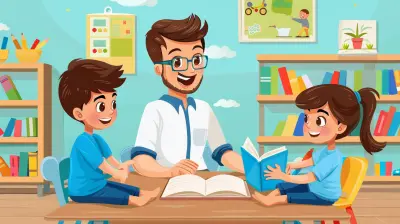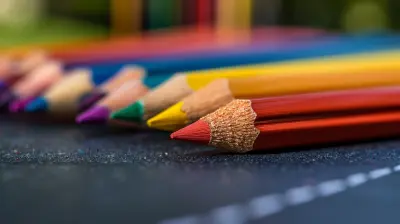Using Virtual Reality to Create Immersive Educational Experiences
29 May 2025
Let’s face it—traditional classroom learning can sometimes feel like watching paint dry. Students staring blankly at textbooks, half-listening to lectures while secretly scrolling through social media… yeah, we’ve all been there.
But what if we could teleport students to ancient Rome, send them inside a beating heart, or let them conduct science experiments without fear of burning down the school? No, this isn’t some futuristic sci-fi dream. It’s happening right now, thanks to Virtual Reality (VR).
VR isn’t just for gaming anymore—it’s quickly becoming a game-changer (pun totally intended) in education. So, grab your virtual goggles, and let’s dive into how VR is transforming learning experiences from “meh” to mind-blowing! 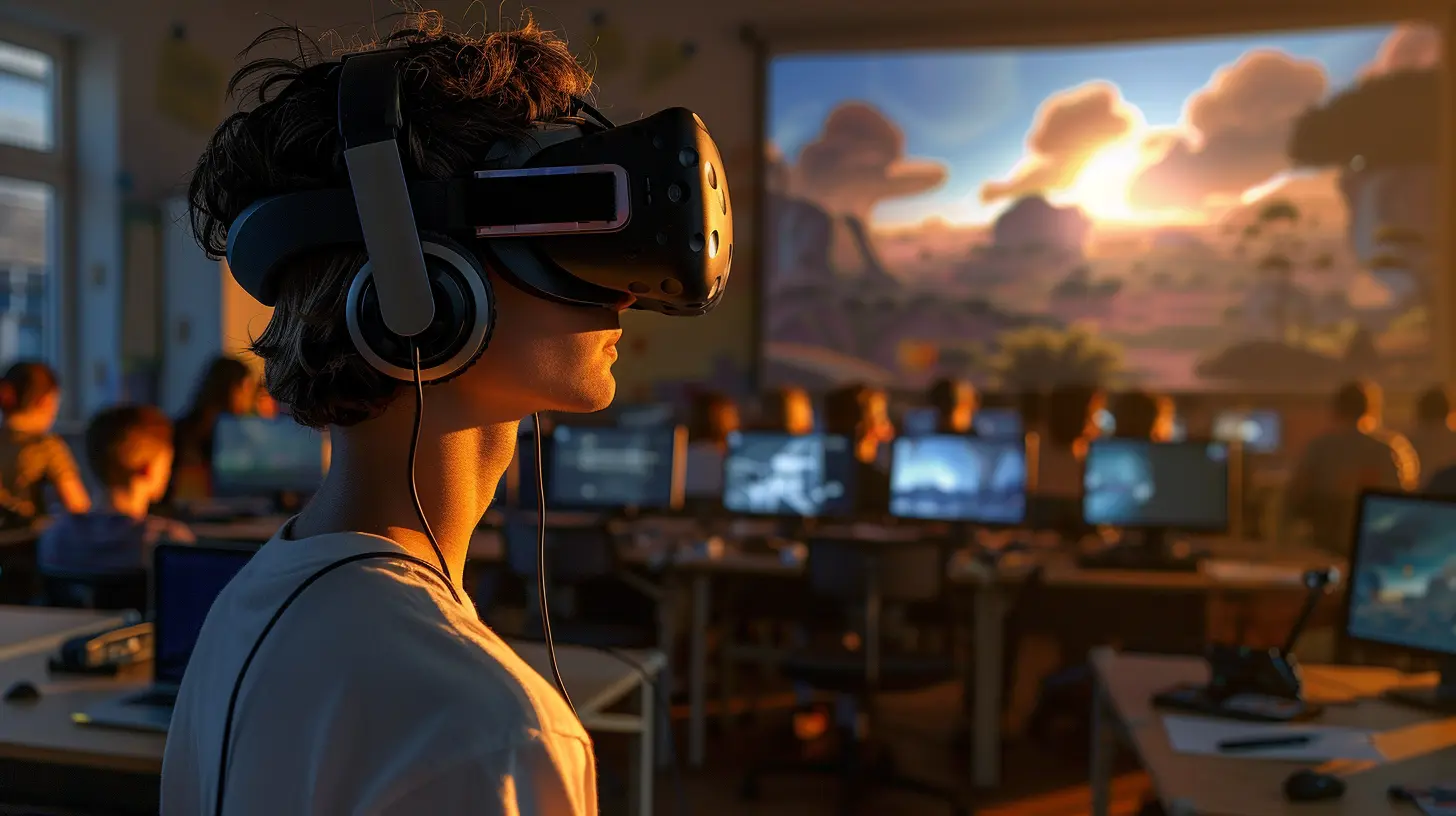
🎧 What Is Virtual Reality, and Why Should We Care?
For those still picturing pixelated graphics and clunky headsets from the ‘90s, let’s clear things up. VR uses computer technology to create immersive, interactive environments that make you feel like you’re physically inside a different world.Instead of just reading about the Great Wall of China, imagine putting on a VR headset and walking along its length, admiring the view just as an ancient traveler would. That’s the power of VR—it transforms passive learning into active exploration.
And let’s be real, anything that makes students excited about learning is worth paying attention to. 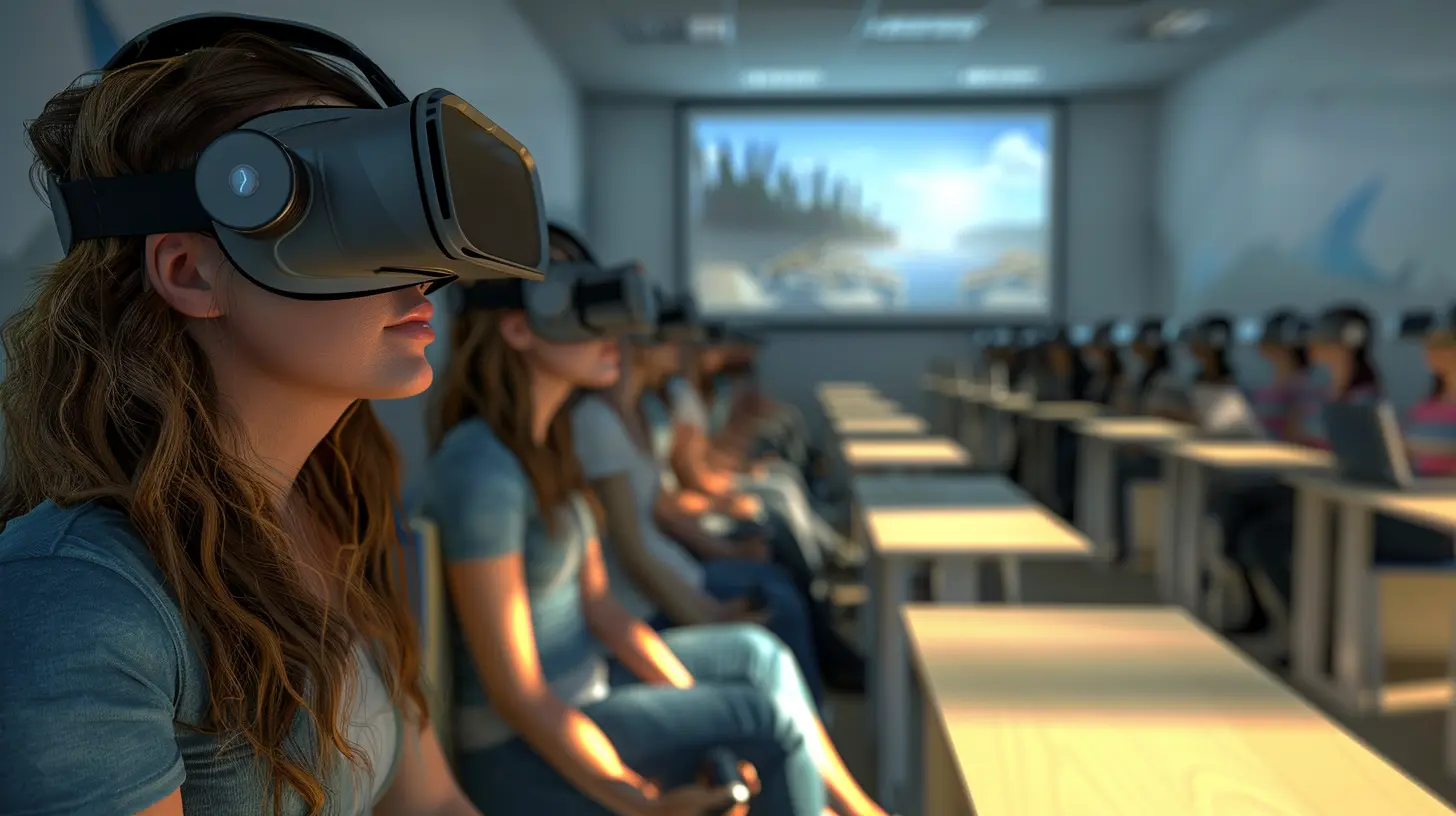
🚀 The Magic of Immersion: Why VR Works So Well for Learning
1. Learning by Doing
Ever heard the phrase, “Tell me, and I forget. Teach me, and I may remember. Involve me, and I learn”? Turns out, ol’ Benjamin Franklin was onto something.VR is the ultimate “learning by doing” tool. Instead of memorizing formulas, students can step into a lab and conduct chemistry experiments—without risk of blowing anything up. Practical experience sticks in the brain way better than rote memorization!
2. Bye-Bye Boring Lectures, Hello Engagement!
Keeping students engaged is one of education's biggest challenges. But VR makes learning feel like an adventure.Who wouldn’t want to shrink down and explore the human bloodstream like a character from The Magic School Bus? Or experience the force of gravity firsthand by walking on the moon? When learning feels like play, retention skyrockets.
3. Breaking Down Complex Concepts
Some subjects are just… tough. Quantum physics, anatomy, or molecular biology can leave even the brightest students feeling lost.VR makes the abstract tangible. Instead of struggling to picture a DNA strand, students can manipulate one right in front of their eyes. Learning suddenly becomes a hands-on experience, which makes even the trickiest subjects easier to grasp. 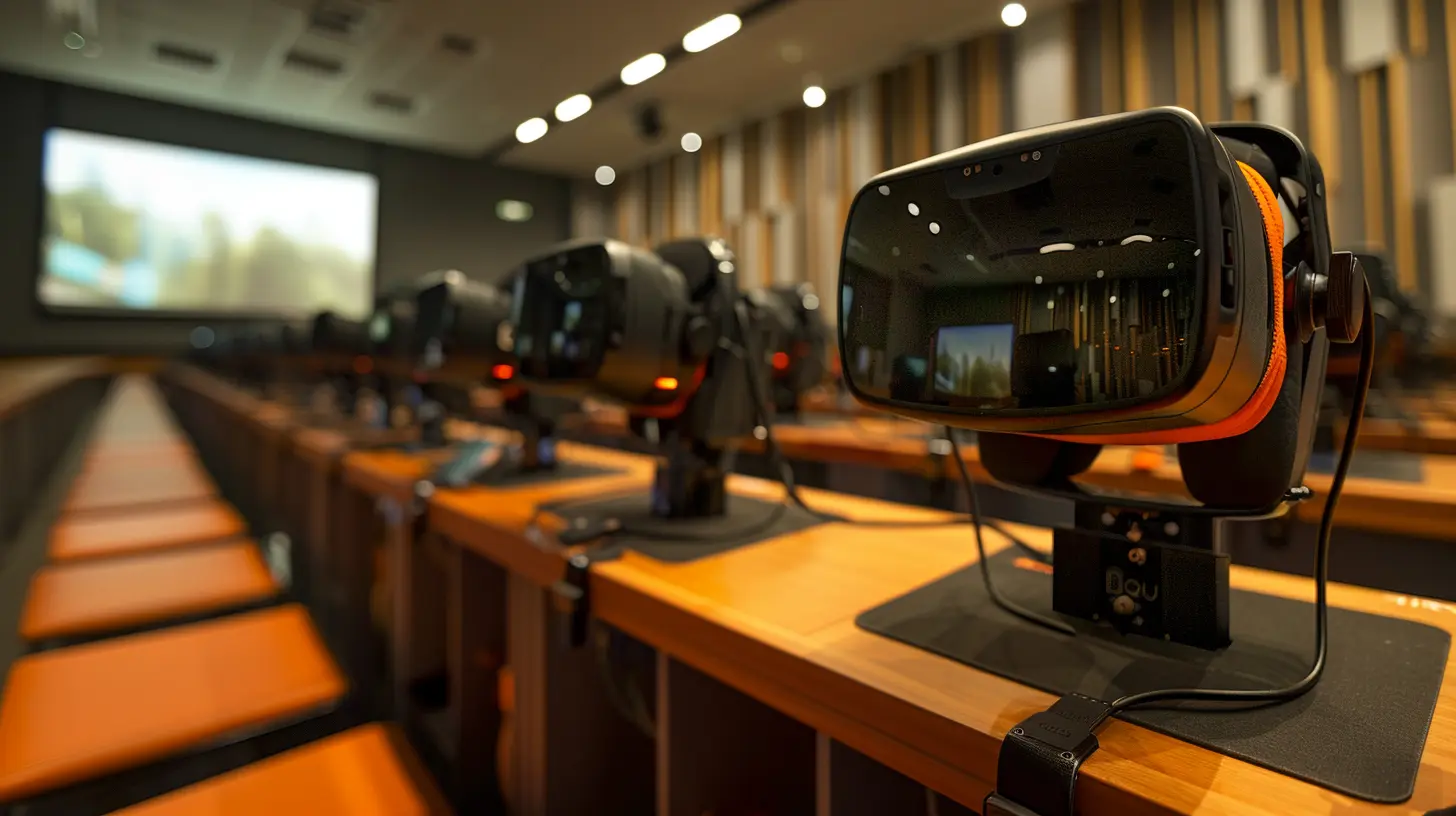
🏫 How VR is Being Used in Education Right Now
🔬 Science Class, But Make It Awesome
VR lets students do things they could never do in a regular classroom—exploring inside a volcano, dissecting a virtual frog (without the smell!), or watching cells divide in real-time.Platforms like Labster offer VR science experiments where students can test hypotheses and make discoveries just like real scientists. And the best part? No risk of setting anything (or anyone) on fire.
🏛️ History: Time Travel, Minus the Paradoxes
History classes often struggle with making the past feel alive. But with VR, students can step into historical events instead of just reading about them.Want to witness the signing of the Declaration of Independence? Walk through the ruins of Pompeii before the volcanic eruption? VR lets students experience history firsthand, making it way more memorable than a dry textbook.
📚 Language Learning with a Side of Culture
Learning a new language isn’t just about memorizing vocabulary—it’s about understanding the culture, too. With VR, students can immerse themselves in a Spanish-speaking town, practice ordering food in a Parisian café, or navigate the busy streets of Tokyo—all from their classroom.Apps like Mondly VR make language learning more natural and interactive, helping students gain confidence in real-world conversations.
🏥 Medical Training Without the Risk
Medical students used to practice on cadavers or—yikes—live patients. Now, VR allows future doctors to perform surgeries, diagnose illnesses, and explore human anatomy in lifelike detail before ever touching a real patient.Platforms like Osso VR provide realistic surgical training, helping med students refine their skills without, you know, actual human consequences. 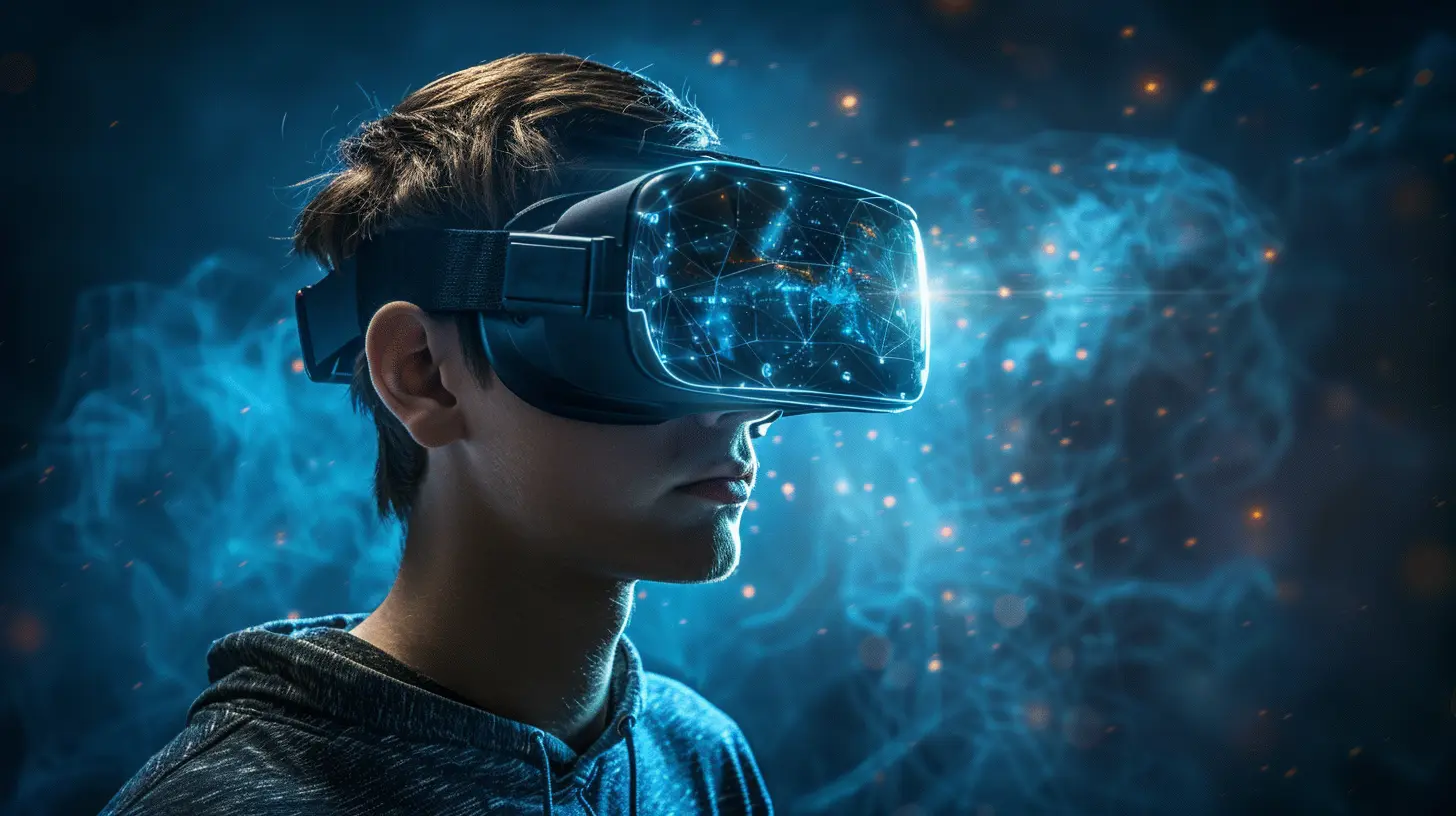
🎮 The Fun Side: VR for Gamified Learning
Let’s be real—kids love video games. So why not turn learning into a game?VR-based gamified learning keeps students motivated and coming back for more. Apps like Tilt Brush (for creative arts) or Google Expeditions (for virtual field trips) make education feel more like an interactive adventure than a boring obligation.
And let’s not forget Minecraft Education Edition, where students can build historical landmarks or simulate chemistry experiments in a world they’re already obsessed with. (Yes, Minecraft can be educational. Who knew?)
💰 But What About the Price Tag?
Okay, so VR sounds amazing, but isn’t it ridiculously expensive? The good news: it’s becoming more affordable every year.Budget-friendly options like Google Cardboard allow schools to dip their toes into VR using just a smartphone and a $20 headset. More advanced systems like Oculus Quest or HTC Vive cost more but provide deeper engagement.
Many schools are also applying for grants and funding to bring VR into their classrooms. As technology advances, prices will likely drop even further, making VR accessible to more students worldwide.
🏆 The Future of VR in Education
So, what’s next for VR in education?- AI-powered tutors that adapt lessons based on student performance.
- Haptic feedback for hands-on experiences (imagine "feeling" a virtual object!).
- Augmented Reality (AR) integration, blending the real world with digital content.
One thing’s for sure—VR isn’t going anywhere. As it continues to evolve, classrooms will become even more interactive, engaging, and, dare we say, fun!
🎯 Final Thoughts
Virtual Reality is revolutionizing education in ways we never thought possible. It’s turning dull lectures into thrilling adventures, making complicated subjects easier to grasp, and giving students hands-on experiences without leaving their seats.Sure, traditional learning methods won’t disappear overnight (textbooks still exist, after all). But VR is proving that education doesn’t have to be boring. It can be immersive, exciting, and—the best part—effective.
So, the next time someone says, “Put away the VR headset and hit the books,” you can confidently reply, “But I am studying!
all images in this post were generated using AI tools
Category:
Virtual ClassroomsAuthor:

Olivia Chapman
Discussion
rate this article
3 comments
Korian Adkins
This article beautifully highlights how virtual reality transforms learning, making it engaging and immersive for students. Great insights!
June 11, 2025 at 12:56 PM

Olivia Chapman
Thank you for your kind words! I'm glad you found the insights on VR in education engaging.
Samira McCracken
This article raises fascinating questions! How does virtual reality enhance learning retention? Can it truly replicate real-world experiences, and what subjects benefit most from this innovative approach?
June 8, 2025 at 2:49 AM

Olivia Chapman
Thank you for your thoughtful comment! Virtual reality enhances learning retention by providing immersive, interactive experiences that engage learners more deeply. While it can't fully replicate real-world experiences, it offers unique simulations that are particularly beneficial for subjects like science, history, and vocational training.
Kade McElveen
What a fantastic read! This article beautifully highlights the transformative potential of virtual reality in education. The immersive experiences it offers can truly redefine learning, making it more engaging and impactful for students. Excited to see how this evolves!
June 6, 2025 at 4:30 AM

Olivia Chapman
Thank you for your kind words! I'm glad you found the article insightful and share the excitement for VR's potential in education.

